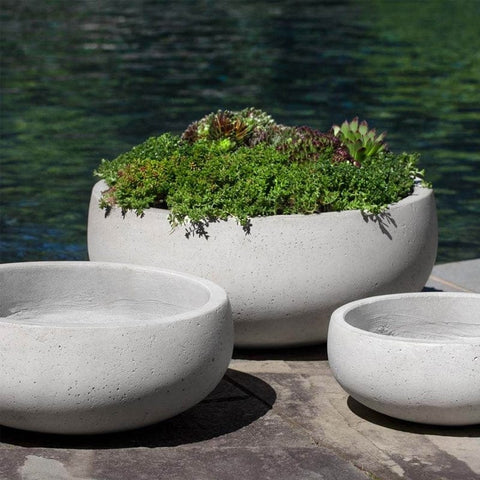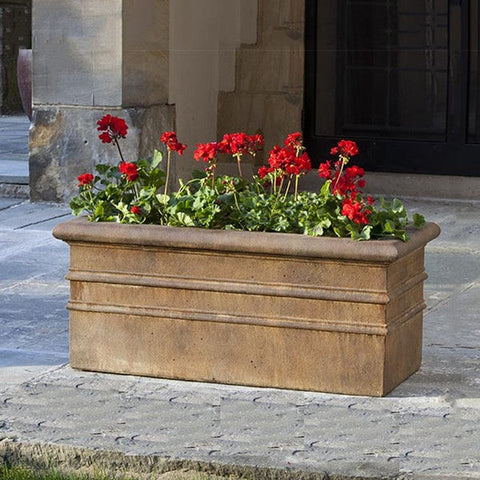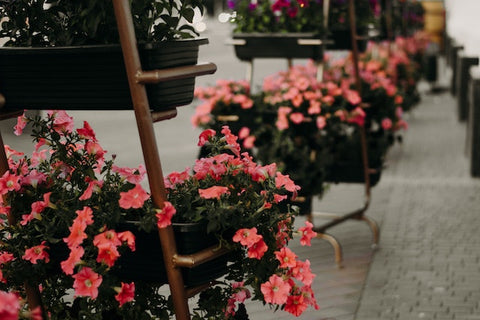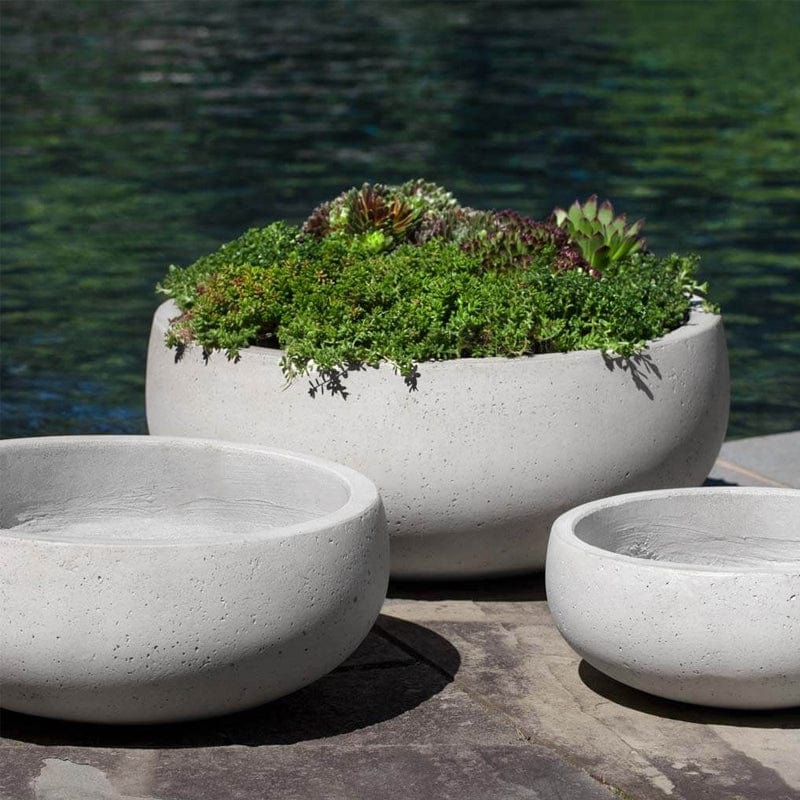Container gardening is a great way to enjoy fresh produce and beautiful plants without needing a large outdoor space. Whether you have a backyard or a balcony, container gardening allows you to grow a variety of plants in a small area. With just a few simple steps, anyone can start a container garden and become a green thumb in no time.
The first step to starting a container garden is to choose the right containers. Containers should be large enough to accommodate the plants you want to grow, with adequate drainage holes to prevent water buildup. Next, choose the right soil for your plants, as different plants have different soil requirements. Once you have your containers and soil, it's time to choose the plants you want to grow. From herbs to vegetables to flowers, there are countless options for container gardening. With these basics in mind, let's dive into the eight steps to starting a container garden in your backyard or balcony.
1. Choosing Your Plants
When it comes to choosing plants for your container garden, there are a few factors to consider. First, think about the amount of sunlight your garden will receive. Some plants require full sun, while others can thrive in partial shade.
Vegetables
If you're interested in growing vegetables, consider options like tomatoes, potatoes, and strawberries. These plants can all be grown in containers and will provide a bountiful harvest. Be sure to choose varieties that are suited for container gardening and that will thrive in your climate.
Herbs
Herbs are another great option for container gardening. Consider planting basil, rosemary, or thyme in your garden. These plants are easy to grow and will add fresh flavor to your meals.
Flowers
If you're looking to add some color to your garden, consider planting flowers like petunias, marigolds, or pansies. These plants will add a pop of color to your space and can be grown in containers of various sizes.
Succulents
Succulents are a low-maintenance option for container gardening. These plants come in a variety of shapes and sizes and can add an interesting texture to your garden. Consider planting succulents like aloe vera or jade in your container garden.
Remember to choose plants that are suited for container gardening and that will thrive in your climate. With the right plants and care, your container garden will flourish.

2. Selecting the Right Containers
When starting a container garden, one of the most important decisions you'll make is selecting the right containers. There are several factors to consider, including the material of the container, weight, and depth.
Clay Vs Plastic Pots
Clay pots are a popular choice for container gardening because they are porous and allow for better air circulation and water drainage. However, they are also heavier and more fragile than plastic pots. If you plan to move your containers frequently, plastic pots may be a better option.
Plastic pots are lightweight and durable, making them easy to move around and less likely to break. They also come in a variety of colors and sizes, allowing you to customize your container garden to your liking. However, they may not allow for as much air circulation and water drainage as clay pots.
Weight and Depth Considerations
When selecting containers, it's important to consider their weight and depth. Shallow containers are great for plants with shallow roots, such as herbs and lettuce. Deeper containers are better for plants with deeper roots, such as tomatoes and peppers.
It's also important to consider the weight of your containers, especially if you plan to move them frequently. Large containers filled with soil can be very heavy, so it's important to select containers that you can easily move or place on a sturdy surface.
Finally, make sure your containers have drainage holes to prevent water from accumulating and causing root rot. If your containers don't have drainage holes, you can easily drill them yourself or purchase containers with pre-drilled holes.
By considering these factors when selecting your containers, you can create a successful container garden that will thrive in your backyard or balcony.
3. Choosing the Perfect Location
When it comes to starting a container garden, choosing the perfect location is crucial. The right location can make all the difference in the success of your garden. Here are a few things to consider when choosing a location for your container garden:
Location
The first thing to consider is where you want to place your container garden. Whether you have a backyard or a balcony, you want to choose a location that gets plenty of sunlight. Most vegetable plants require at least six hours of direct sunlight per day, so make sure to choose a location that gets plenty of sun.
Sunlight
Once you've found a location that gets plenty of sunlight, it's important to consider how much sunlight your plants will actually receive. If you're planting on a balcony or in a small backyard, you may need to consider the surrounding buildings and trees that could cast shade on your plants. Make sure to choose a location that gets plenty of direct sunlight throughout the day.
Other Considerations
In addition to sunlight, there are a few other things to consider when choosing a location for your container garden. If you're planting on a balcony, make sure that the weight of your containers won't be too much for the structure to handle. You'll also want to make sure that your containers have adequate drainage and that you have easy access to water.
Overall, choosing the perfect location for your container garden requires careful consideration of several factors. By taking the time to choose the right location, you'll be setting yourself up for a successful and bountiful harvest.

4. Drainage and Filling the Planter with Soil
Once you have chosen the right container for your plants, it's time to fill it with soil and ensure proper drainage. This step is crucial for the health and growth of your plants.
First, make sure your container has drainage holes at the bottom. If not, drill a few holes to allow excess water to escape. Without proper drainage, your plants can become waterlogged, leading to root rot and other issues.
Next, choose the right soil or potting mix for your plants. Garden soil may be too heavy and compact for container gardening. Instead, opt for a specialized potting mix that is lightweight and contains a blend of nutrients and organic matter.
When filling your container, leave about an inch of space at the top to prevent soil from spilling over. Gently pack the soil down to remove any air pockets.
Finally, add a layer of drainage material, such as rocks or gravel, to the bottom of your container. This will help excess water drain away from the roots of your plants and prevent water from pooling at the bottom.
By following these simple steps, you can ensure your container garden has the proper soil and drainage for healthy and thriving plants.
5. Preparing Your Plants
Prepare your plants for planting by giving them a thorough clean-up. Remove any wilted or discolored blooms and yellowed leaves. If your plants are root-bound, gently score the roots to promote new growth. If your plants are overly tall, trim them by cutting just above the leaf node at the desired height. This will encourage lateral growth instead of vertical growth.
6. Planting
Once you have selected the right container and potting soil, it's time to plant your container garden. Here are some steps to follow:
-
Fill your container with potting soil, leaving about an inch of space at the top.
-
Make a small hole in the soil with your finger or a trowel, and gently place the plant in the hole.
-
Add more soil around the plant until it is at the same level as it was in its original container.
-
Gently press down on the soil around the plant to remove any air pockets.
-
Repeat the process with the rest of your plants, leaving enough space between them to allow for growth.
-
Water your plants thoroughly, making sure the soil is evenly moist.
-
Monitor your plants regularly and water them as needed, being careful not to overwater.
-
Consider using a water-soluble fertilizer to provide your plants with the nutrients they need to thrive.
Remember that different plants have different water requirements, so make sure to research the specific needs of each plant in your container garden. With proper planting and care, your container garden will provide you with fresh herbs, vegetables, or flowers all season long.

7. Watering the Garden
Watering a container garden is essential for the plants to grow and thrive. The amount of water needed will depend on the type of plants, the size of the container, and the weather conditions. Here are some tips for watering your container garden:
-
Check the soil moisture regularly: Stick your finger into the soil up to the second knuckle. If the soil feels dry, it's time to water. If it's still moist, wait a day or two before checking again.
-
Water deeply: When you water, make sure to saturate the soil completely. This will encourage the roots to grow deeper and help the plants become more drought-tolerant.
-
Avoid overwatering: Too much water can lead to root rot and other problems. Make sure the soil has good drainage and don't water unless the soil is dry.
-
Use a watering can or hose with a nozzle: This will allow you to control the flow of water and direct it where it's needed most.
-
Consider using a self-watering container: These containers have a reservoir that holds water, allowing the plants to absorb it as needed. This can be especially helpful if you're going on vacation or have a busy schedule.
By following these tips, you can ensure that your container garden gets the water it needs to thrive.
8. Maintaining Your Container Garden
Maintaining a container garden requires regular attention to ensure that the plants remain healthy and productive. Here are some tips to help you keep your container garden in top condition:
Watering
Watering is one of the most critical aspects of maintaining a container garden. Plants in containers tend to dry out faster than those in the ground, so it's essential to monitor the soil moisture regularly. The frequency of watering will depend on several factors, including the size of the container, the type of plant, and the weather conditions.
To avoid overwatering, it's essential to check the soil moisture level before watering. Stick your finger about an inch into the soil. If it feels dry, it's time to water. If it's still moist, wait a day or two and check again.
Fertilizing
Plants in containers need regular fertilization to thrive. A slow-release fertilizer applied at planting time can provide the necessary nutrients for several months. However, after that, you may need to supplement with additional fertilizers.
It's essential to follow the manufacturer's instructions when applying fertilizers. Over-fertilizing can damage plants, while under-fertilizing can lead to poor growth.
Pruning
Pruning is necessary to keep your container garden looking neat and tidy. Regular pruning can also encourage new growth and improve the overall health of your plants.
When pruning, use sharp, clean tools, and make clean cuts. Avoid tearing or ripping the plant tissue, as this can lead to disease or pest problems.
Pests and Diseases
Pests and diseases can quickly spread in a container garden, so it's essential to monitor your plants regularly for signs of trouble. Common problems include aphids, spider mites, and powdery mildew.
If you notice any signs of pests or diseases, take action immediately. There are several organic and chemical options available, depending on the severity of the problem.
By following these tips, you can keep your container garden healthy and productive throughout the growing season.

Add Flair to Your Container Garden
One of the best ways to add some personality to your container garden is to use specially crafted planters. These planters come in a variety of shapes, sizes, and colors, and can really make your plants stand out.
One popular option is to use hanging planters, which can be hung from a balcony or porch railing. These planters are perfect for trailing plants like ivy or petunias, and can really add some dimension to your garden.
Another option is to use decorative planters, which can be made from materials like terracotta or ceramic. These pots can be painted or glazed to match your decor, and can really make a statement in your garden. And why not add a splash of color to your outdoor space with vibrant planters.
If you're short on space, you can also use vertical planters, which can be mounted on a wall or fence. These planters are perfect for herbs and small vegetables, and can really maximize your growing space.
No matter what type of planter you choose, make sure it has proper drainage to prevent your plants from becoming waterlogged. And don't forget to match your planters to your plants' specific needs, such as size and sun exposure.
By adding some specially crafted planters to your container garden, you can really make it your own and create a unique outdoor space.

